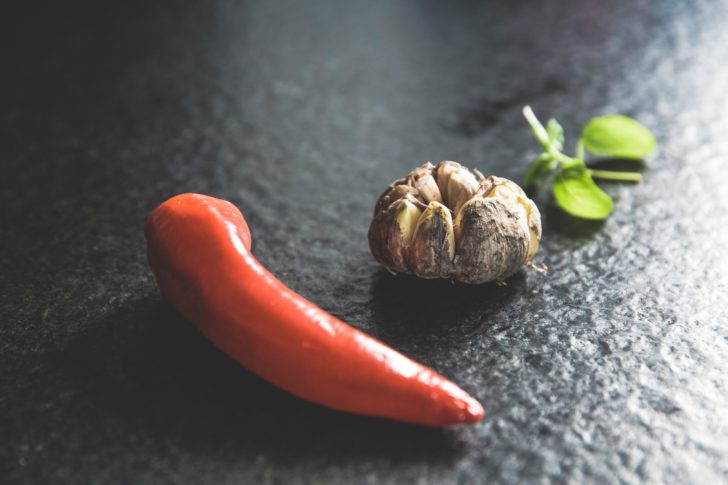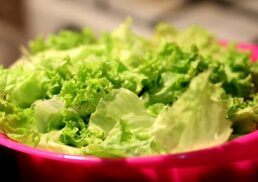Black garlic, an ancient Asian culinary delight, has captivated food enthusiasts around the world with its unique sweet and savory flavor. This enticing ingredient not only brings a distinct taste to various dishes but also offers numerous health benefits. Let’s embark on a journey to explore the history, transformation process, and versatile uses of black garlic, while also learning how to make and store it at home.
Table of Contents
Key Takeaways
Black garlic is a unique ingredient with a sweet, savory and umami-rich flavor, rich history and numerous health benefits.
The transformation of black garlic from raw to its complex flavor profile involves an aging process involving the Maillard reaction.
Black Garlic has antioxidant properties that can help protect cells from damage, reduce indicators of heart disease & improve brain function. It’s also versatile in culinary uses ranging from appetizers to desserts.
The Magic of Black Garlic
When it comes to transforming an ordinary dish into something extraordinary, black garlic proves to be a game-changer. Its sweet, savory, and umami-rich flavor is a result of a fascinating transformation that it undergoes, setting it apart from regular garlic. But its unique taste is just the tip of the iceberg; black garlic has a rich history and offers numerous health benefits.
Black garlic owes its existence to a fermentative process spanning several
Origin and History
The origins of black garlic trace back to antiquated Asian culinary traditions, notably first utilized in Korea and Thailand. It has been a staple ingredient in Asian cuisine for centuries, adding a touch of complexity to various dishes. Some even believe that black garlic was initially developed in Korea for its medicinal properties, showcasing its versatility and importance throughout history.
Despite the enigmatic origins of black garlic, one fact remains undisputed: its unique flavor profile and health benefits have stood the test of time, making it a prized ingredient in various cuisines around the world. Today, black garlic continues to be celebrated for its rich, slightly sweet, and slightly sticky taste, which is a result of the aging process and the Maillard reaction that occurs during the transformation.
Flavor Profile
Contrary to the well-known pungency of raw garlic, black garlic offers a subtler and more intricate black garlic taste. It is sweet and slightly tangy, with a hint of molasses and licorice. This subtlety comes from the fermentation process, which transforms the garlic’s natural sugars and results in the formation of its intricate flavors.
The taste of black garlic is a delightful surprise for the palate, as it adds depth and richness to dishes without overpowering other flavors. Whether incorporated into sauces, dips, or main courses, black garlic brings a unique taste that is sure to elevate any culinary creation.
Transformation Process
One might ask, how does the transition from raw to the sweet and savory black garlic occur? The secret lies in the aging process and the Maillard reaction. By exposing garlic to high temperatures and humidity for an extended period, usually between 60 to 90 days, the Maillard reaction occurs. This chemical reaction between sugars and amino acids results in the browning of the garlic and the formation of hundreds of flavor-producing compounds.
During this process, the garlic cloves turn black and develop a soft, chewy texture. The once pungent and sharp taste of raw garlic is replaced by a mellow, complex flavor profile that has captivated food enthusiasts and chefs alike. The transformation of black garlic is truly a culinary marvel.
Health Benefits of Black Garlic
Beyond its role as a flavor booster, black garlic serves as a fundamental nutrition source. Packed with antioxidants and offering support for heart health and brain function, black garlic has earned its place as a sought-after ingredient in health-conscious kitchens.
Antioxidant Powerhouse
The high polyphenol content in black garlic endows it with robust antioxidant properties, making it an excellent ally in the fight against oxidative stress. In fact, black garlic contains significantly higher levels of antioxidants compared to its raw counterpart. These antioxidants help protect cells from damage caused by free radicals, which in turn contributes to the prevention of various diseases and promotes overall health.
Moreover, studies have shown that black garlic may help regulate blood sugar levels and prevent diabetes-related complications. Its powerful antioxidant capacity combined with its unique flavor makes black garlic a delicious and nutritious addition to any meal.
Heart Health
The influence of black garlic on heart health is indeed remarkable. Research suggests that it may reduce indicators of heart disease, such as high cholesterol, triglycerides, and atherosclerosis. Additionally, black garlic has been shown to increase HDL cholesterol, also known as ‘good’ cholesterol, which helps protect the heart and blood vessels from disease.
By scavenging and removing LDL cholesterol, which is known as ‘bad’ cholesterol, HDL cholesterol carries it from other parts of the body back to the liver for processing and elimination. Consuming black garlic may lead to higher levels of HDL cholesterol, providing a significant advantage for heart health.
Brain Function
The advantages of black garlic reach further, stretching from heart health to brain function. Studies suggest that black garlic may have compounds that:
Protect the brain from memory loss and degenerative diseases
Offer a beneficial effect on overall health
Reduce inflammation in the brain, potentially preventing cognitive conditions such as dementia and Alzheimer’s disease
The powerful combination of antioxidants and anti-inflammatory effects in black garlic makes it a promising ingredient for promoting brain health. Incorporating black garlic into one’s diet not only adds a delicious flavor to dishes but also supports cognitive function and overall well-being.
Learn more, visit 6 Impressive Health Benefits of Black Garlic.
Making Black Garlic at Home
If the distinctiveness of black garlic has sparked your curiosity, you might contemplate making it at home. The good news is that with a little patience and the right equipment, you can create your own black garlic and enjoy its unique flavor in your favorite recipes.
Creating black garlic at home is uncomplicated. A food dehydrator is all you require,
Equipment Options
Various equipment alternatives exist for home-based black garlic preparation, including:
Rice cookers: popular choice due to their ease of use, affordability, and ‘keep warm’ setting, which provides a consistent temperature for fermentation. However, using a rice cooker may result in an extended fermentation period and a lingering strong garlic smell.
Slow cookers: can be used to make black garlic, but may require modifications to maintain a consistent temperature.
Dehydrators: can be used to make black garlic by setting the temperature to around 140°F (60°C) and leaving the garlic bulbs inside for several weeks.
Slow cookers and dehydrators are also effective options for making black garlic, as they maintain consistent temperature and airflow, ensuring even fermentation. Regardless of the equipment you choose, such as a slow cooker, it’s important to follow the appropriate aging process to achieve the desired flavor and texture.
Preparation and Aging
Though the preparation and aging process for black garlic is straightforward, it demands patience. Begin by trimming any long roots and stalks from the garlic bulbs and removing any soil or debris from the outer papery skin. Once the garlic bulbs are clean, wrap them in aluminum foil, ensuring they are completely covered. This process will eventually result in aging black garlic, which is also known as aged black garlic.
Place the wrapped garlic bulbs in your chosen equipment, and set the temperature to the appropriate range (usually between 60°C and 90°C) to facilitate the Maillard reaction. The aging process, which transforms the bulbs into aged garlic, typically takes 15 to 90 days, depending on your desired flavor and softness. Once the process is complete, you can obtain aged garlic extract from the aged garlic.
Timeframe and Tips
The timeframe for making black garlic at home varies depending on factors such as the equipment used and your desired flavor intensity. Generally, it takes a minimum of 3-4 weeks, but the garlic can be left to age for up to 60 days.
Achieving the best results calls for patience and meticulousness. It’s essential to leave the garlic undisturbed throughout the aging process and to check on it periodically to assess its texture and flavor. By following the appropriate preparation and aging techniques, you can create delicious homemade black garlic to enhance your favorite dishes.
Creative Culinary Uses for Black Garlic
Limitless opportunities present themselves when blending a head of garlic, specifically black garlic, into your culinary masterpieces. From appetizers and salads to main courses and even desserts, this versatile ingredient can add a unique flavor boost to a wide variety of dishes, especially when combined with olive oil or used as roasted garlic.
Adding aged black garlic extract is an effective method to enhance the depth and intricacy of dishes. It has a sweet
Appetizers and Salads

Adding black garlic to appetizers and salads can elevate their flavor profile and take your dishes to new heights. Its deep, sweet, and tart taste complements various ingredients, and its fermented nature gives it a creamy and velvety consistency that is perfect for dressings and vinaigrettes, such as those made with balsamic vinegar.
Experiment with black garlic in different appetizers, such as black garlic butter with Stilton cheese on a baguette, or create a black garlic vinaigrette for a refreshing salad. Its unique taste and texture will not only enhance the flavor of your dishes but also add an intriguing twist that will leave your guests craving more.
Main Courses
Incorporating black garlic into main courses can transform ordinary dishes into extraordinary culinary experiences. Its rich and savory flavor makes it a perfect addition to pasta dishes, stir-fries, and steak, enhancing the overall taste without overpowering other flavors.
Try adding black garlic to a shrimp scampi pasta or blending it with butter and herbs for a delicious steak topping. Its distinct taste and aroma will take your main courses to the next level, leaving you and your guests impressed with your culinary prowess.
Desserts
While black garlic may not be the first ingredient that comes to mind for desserts, it can add a surprising twist to traditional sweet treats. Its complex flavor profile pairs unexpectedly well with chocolate, making it a striking addition to brownies or chocolate chip cookies.
For a truly adventurous dessert, try making black garlic ice cream, blending it with milk, cream, sugar, and vanilla extract to create a smooth and creamy treat with a hint of savory sweetness. Experimenting with black garlic in desserts will undoubtedly elevate your culinary creativity and leave your taste buds intrigued.
Storing and Handling Black Garlic
For optimal enjoyment of black garlic’s distinct flavor and health benefits, proper storage and handling are vital. By following the appropriate techniques, you can ensure that your black garlic remains fresh and maintains its quality for maximum enjoyment.
Proper Storage
Correct storage of black garlic is key to extending its shelf life and maintaining its flavor and texture. Here are the recommended storage methods:
Store black garlic in an airtight container at room temperature for up to 3 weeks.
Alternatively, you can store it in the refrigerator for up to 6 months.
For longer-term storage, black garlic can be kept in the freezer for up to 1 year.
By following these storage guidelines, you can make sure that your black garlic stays fresh and flavorful for longer periods of time.
Proper storage not only keeps black garlic fresh and flavorful but also helps prevent spoilage, discoloration, and wilting. By taking the time to store black garlic correctly, you can enjoy its unique taste and health benefits in your favorite recipes whenever you please.
Handling Techniques
A handful of straightforward techniques can simplify and enhance the process of handling black garlic. Here are the steps to follow:
Start by removing the skin surrounding the cloves before incorporating black garlic into your recipes.
Gently break off a clove and remove the stem end.
Press the flat side of a knife on top of the clove to break the skin.
For chopping black garlic without it sticking to the knife, try sprinkling a pinch of salt on the cloves before chopping them. To blend black garlic smoothly, combine it with liquid ingredients first, creating a smooth consistency that can easily be incorporated into your dishes.
By following these handling techniques, you can make the most of black garlic’s unique flavor and texture in your culinary creations, including trying out various black garlic recipes. To enhance your dishes, use black garlic as a key ingredient.
Summary
Black garlic is a true culinary gem, offering a rich history, unique flavor profile, and numerous health benefits. By understanding its transformation process, learning how to make it at home, and incorporating it into a wide variety of dishes, you can elevate your cooking skills and delight your taste buds with this ancient ingredient. So go ahead, experiment with black garlic in your kitchen, and discover the magic it can bring to your favorite recipes.
Frequently Asked Questions
What is so special about black garlic?
Black garlic has a unique flavor and texture profile, providing a sweet and slightly tangy taste with a mild garlic hint. Moreover, it is packed with antioxidants and contains more S-allylcysteine (SAC), making it an effective way to absorb allicin and benefit from its properties.
Is it OK to eat black garlic everyday?
It is generally considered safe to consume up to 3-5 grams of black garlic each day. However, exceeding this recommended dose can cause side effects, so it is important to stick to the suggested intake.
What does black garlic taste like?
Black garlic has a sweet, tangy, rich and concentrated flavor, similar to molasses or dried dates, with an earthy taste. Its texture is sticky and spreadable.
What do you use black garlic for?
Black garlic is a great addition to dips, sauces, marinades, salad dressings, condiments, meats, vegetables, grains, and even desserts! Try it in a variety of dishes for a unique flavor.
How long does it take to make black garlic at home?
It takes a minimum of 3-4 weeks to make black garlic at home, although it can be left to age for up to 60 days.









